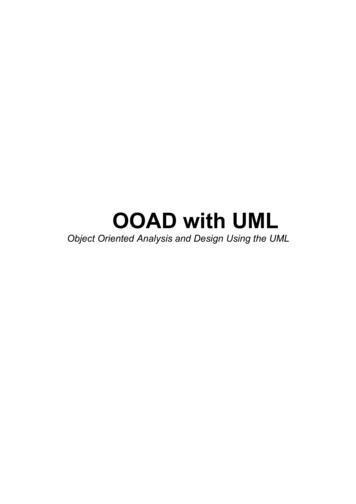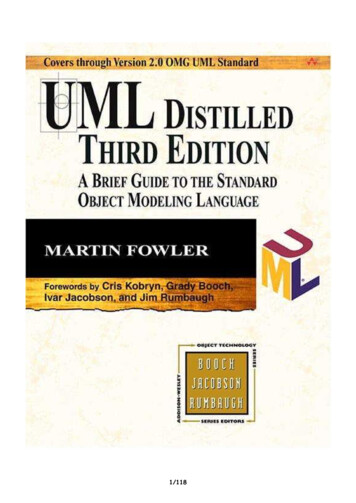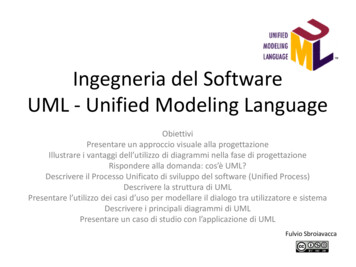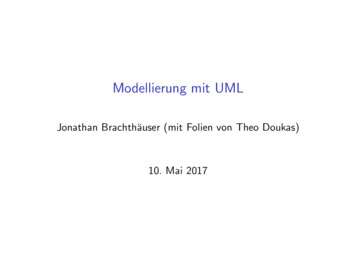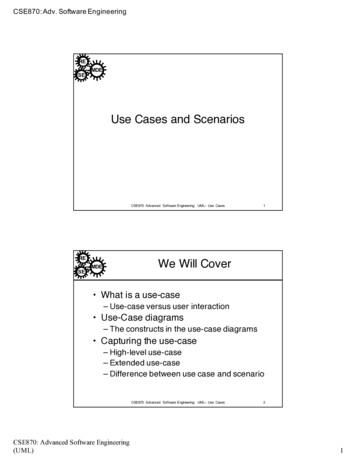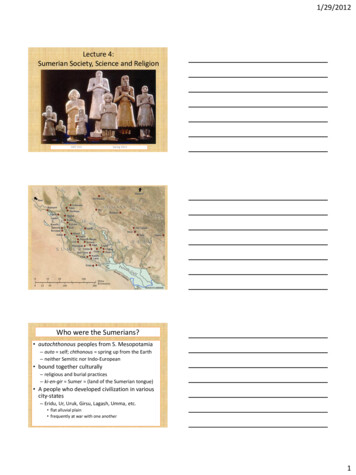
Transcription
1/29/2012Lecture 4:Sumerian Society, Science and ReligionHIST 213Spring 2012Who were the Sumerians? autochthonous peoples from S. Mesopotamia– auto self; chthonous spring up from the Earth– neither Semitic nor Indo-European bound together culturally– religious and burial practices– ki-en-gir Sumer (land of the Sumerian tongue) A people who developed civilization in variouscity-states– Eridu, Ur, Uruk, Girsu, Lagash, Umma, etc. flat alluvial plain frequently at war with one another1
1/29/2012Mesopotamian City-StateBasic political unit in S. Mesopotamia– urban center– villages within a 15 km radius35 such city-states arose– at first, enough distance between them– began to come into direct conflictEach ruled by a particular god/dess– Nanna for Ur– Inanna for Uruk– Enlil for Nippur divided politically, not culturallySumerian: Early Dynastic Period2900-2350 BCE 2900-2700 2700-2500Early Dynastic IEarly Dynastic II– Heroic Age of Epic Literature 2500-2400Early Dynastic IIIA– Warrior Kings of Lagash 2400-2350Early Dynastic IIIBHistory of ED documents mostly administrative texts organization of society in “households”– households—extended political units palace é-gal: “great household”– households could own property and people (slaves)– rewarded for their work with rations– amounts provided depended on gender and statusof the worker– Shuruppak show a single barley register for 20,000people for 6 months centralized economy2
1/29/2012Rise of Sumerian Kingship en: “lord” (roof beam)– secular and religious lugal: “great man”––––“king”sovereign over several city-statesadministered justiceruler’s wife (nin) “lady” took an active role ingovernance– “King of Kish” becomes universal term ensi: “governor” é-gal:“great household”Sumerian King Lists Records a number of Kings in Sumer Kish first city to domination over all of Sumer– King Enmebaragesi (2700 BCE)– “carried way as spoils the weapons of Elam” Gilgamesh of Uruk King of Ur (2600)Royal Tombs (Death Pits) at Ur 2600 BCEExcavated by C. Leonard Woolsey (1924-34) found 1850 burials 17 were “royal /exp set.html3
1/29/2012Title: The Goat in Thicket (Ram and Tree), one of the pair from the Great Death Pitin the Royal Cemetery of Ur. Muqaiyir, Iraq.Date: ca. 2600 BCE.4
1/29/2012Standard of Ur:Inlaid Lapis Lazuli from Tomb PG 7792600-2400 BCEPG 800A small metal object made of electrum lay among the remains ofanimals. The reins which held the oxen must have passed through thesilver rings of this objectWall plaque- Ur-Nanše and family.Limestone w/ cuneiform inscriptionGirsu (modern Tello), Southern IraqEarly Dynastic IIIA 2550-2400 BCE5
1/29/2012Domination of Lagash (2450-2360) Struggle between Kish, Uruk and Ur forcontrol over Sumer– raids by nomadic Elamite tribes King Eannatum amassed a large army– attacked city of Umma Commemorative Inscriptions of Lagash– Stele of the VulturesStele of Eannatum. ca. 2460 BCEStele of Eannatum. ca. 2460 BCE from Girsu(Telloh), fragments6
1/29/2012Sumerian agriculture Main canals were nearly75 feet wide, hadhundreds of connectingchannels, and ran forseveral milesFoot Sowing PlowThe Sumerian DietCereals were primary calories wheat (emmer, einkorn, far) millet barley– first economic unit in Mesopotamia used in a variety of ways– flour– porridge– beer7
1/29/2012Sumerian Diet milk– butter (main source of fats) very little meat– fish (shellfish)– birds– turtles honey syrup fruits and vegetables– onions and garlicFigsPomegranatesDatesPistachiosStewSumerian CosmologyMesopotamia was a flat disk with a rim ofmountains– all floating on a sea of water– http://www.youtube.com/watch?v 0E 4XJK93bQ&feature related all things in the world was animate– trees, rocks, springs alive and directed by supernaturalbeings astral bodies moved across the sky– (great vault)8
1/29/2012SumerianPantheonTitle: Statues, Abu Temple.Tell Asmar, IraqDate: ca. 2700–2500 BCE An: God of heavenEnlil: God of the air; patron deity of Nippur.Ninlil: An air goddess and wife of EnlilEnki: God of freshwater, male fertility, and knowledge; patron deity of Eridu.Inanna: Goddess of sexual love, female fertility and warfare; matron deity ofUruk.Ki: Goddess of the earth.Nanna, God of the moon; one of the patron deities of UrNingal: Wife of Nanna.Ninurta: God of war, agriculture; patron deities of LagashUtu: God of the sun at the E'barbara temple of SipparTitle: Priest-King Feeding Sacred Sheep, from vicinity of Uruk (Warka), IraqDate: ca. 3300 BCEMuseum: Staatliche Museen zu BerlinTemple Worship Religion revolved around the citytemple Female deities had male priests Male deities had female priestesses spiritual leader of the city exercised great political authority temples extremely rich 1/3 economy sacred prostitutionTemple Oval at Khafaje9
1/29/2012Apsu: the fresh waters (male principle)Tiamat: the salt waters (female principle)Ea, the god of intelligence and wisdom,puts Apsu in a trance and then kills him.The statue of the god Mardukwith his dragon, from aBabylonian cylinder seal.Marduk killed Tiamat.Cults statues and rites small statue of the god/dess housed clothed fed and sheltered priests went about the templenude lest clothing offend the deities sexual practices in the temple– sacred prostitutes– hymns, music with flutes, drums andlyresStatuettes of Temple of Abu,Tell Asmar– offering of food, milk, beer,c. 2700-2600 BCE, gypsumvegetables– sacrifice of a bull10
1/29/2012 9 Sumerian Pantheon An: God of heaven Enlil: God of the air; patron deity of Nippur. Ninlil: An air goddess and wife of Enlil Enki: God of freshwater, male fertility, and knowledge; patron deity of Eridu. Inanna: Goddess of sexual love, female fertility and warfare; matron deity of Uruk. Ki: Goddess of the earth. Nanna, God of the moon; one of the patron .
